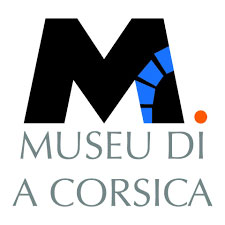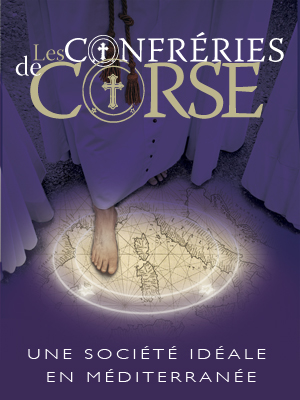An ideal society in the Mediterranean
The museum of Corsica organizes from July 11 to December 30, 2010, a temporary exhibition devoted to the brotherhoods of penitents in Corsica put in perspective with the brotherhood movement in the Western Mediterranean. This exhibition will be accompanied by a well-documented publication.
This confraternity movement, whose development was favored in Corsica by the Franciscans, was to irrigate the island society from the end of the Middle Ages, reaching its apogee in the modern era, in a Mediterranean context, taking place during its history alongside other pious associations of laymen. Suppressed during the Revolution, authorized again during the Empire, it continues until today, marked by evolutions, phases of decline and then revival.
“Reflection and model of the communities”, as Mrs. Froeschlé-Chopard underlines in her work, the brotherhoods of the “Disciplinati della Santa Croce”, also called “Battuti” in reference to the “discipline” they gave themselves publicly or privately in memory of the Passion of Christ, are seen as an “ideal society”, egalitarian.
Governed by statutes, administered by officers they elected – prior, sub-prior, treasurer -, they testified to a common belonging by their habit, their banner, their church which they maintained and adorned, thus playing a major role in the island’s commissioning of works of art, as well as by manifestations of collective piety, by the paraliturgies and rituals organized mainly around Holy Week (processions, songs, sepolcri and ephemeral decorations…)
By moral obligations of good conduct and good morals of their members, by social obligations of assistance, charity, regulation of conflicts and reconciliation of the parties – role of paceri -, by their “taking charge” of death, not only from the agony of the confrere to his burial, but also as “ferrymen of souls” and intercessors, they asserted themselves, in the course of the centuries, as a marker of identity and sociability of a rural and urban society, whose solidarities they reinforced, through their practices.
It is of these dominants, revealing the constant aspiration of men to give shape to an “ideal society” that this exhibition intends to give an account.
The exhibition will be organized in five major sections bringing together works and documents from Corsica, the continent and several European countries.
1/ All brothers
This exhibition is devoted to the brotherhoods of penitents in Corsica, markers of island sociability since the Middle Ages.
Alongside them, other pious associations of laymen spread throughout Christianity took their place over the centuries: Third Orders, Laudesi, brotherhoods linked to the new post-Tridentine devotions, such as those of the Blessed Sacrament, the Rosary, the Good Death or the Souls in Purgatory, Marian congregations or the Sacred Heart of Jesus in the 19th century, without forgetting the brotherhoods of priests and trades.
2/ An ideal society
Placed under various titles, these associations of devotees called most frequently compagnie dei disciplinati della Santa Croce, “model and reflection” of communities, are seen as an ideal society.
Intended to be egalitarian, they were governed by founding acts that defined their organization and the rights and duties of their members.
Administered by elected officers, relays of public institutions, mediators and reconcilers, they affirmed their common belonging by: the church or the altar of the brotherhood, the habit, the banner, the practices of collective devotion, their presence in habit at liturgical and patronal feasts.
3/ Holy week and penitential piety
The brotherhoods of penitents assert themselves as a constituted body in the paraliturgies of Holy Week.
They testify to an exacerbated baroque piety through their offices centered on the meditation of the passion of Christ, through their processions and rituals associated with ephemeral decorations, and through their musical repertoire.
From Palm Sunday to Resurrection Sunday, they also enhance the presence of the parish services.
4/ Dying well or from “exposed death to stolen death
The mission of the brotherhoods was to help the dying person to die well by inviting him to make a will to put his affairs in order, to entrust himself to God and to the heavenly court for the salvation of his soul. From the raising of the body to the burial, they accompanied the deceased, taking charge of the funeral expenses, praying and having masses celebrated in suffrage of their souls, they also affirmed themselves as privileged intercessors. Confronted with the new demands of society, they continue today to place death at the center of their confraternal solidarity.
5/ THE SPONSORING BROTHERHOODS
Over the centuries, the brotherhoods have become major sponsors of works of art.
They built independent chapels or founded altars in parish churches.
They adorned them with rich decorations and exceptional works of art by calling upon renowned artists. They completed this ornamentation by commissioning altar linings, works associated with paraliturgies and ephemeral decorations. Concerned about their heritage, which they continue to enrich, they remain an actor in economic life.
Curator of the exhibition :
Mauricette Mattioli, Chief Curator of Heritage, head of the Inventory Department at the Heritage Directorate
Marie-Eugénie Poli-Mordiconi, curator, in charge of the collections at the Museum of Corsica.




